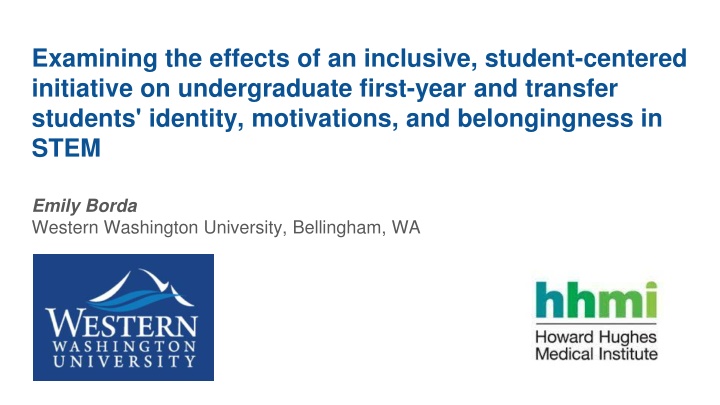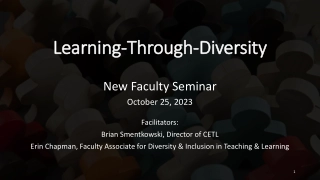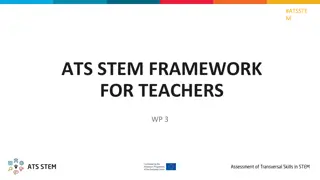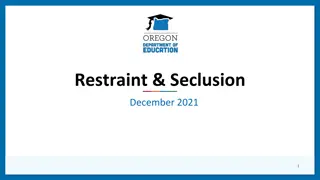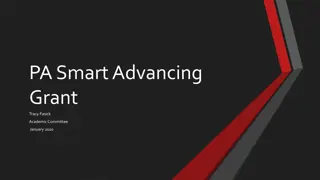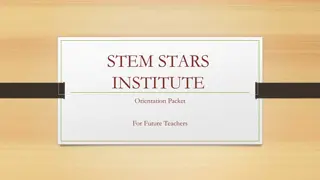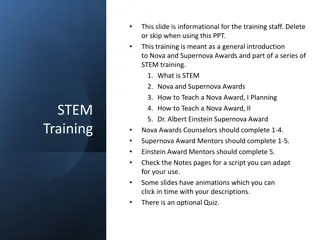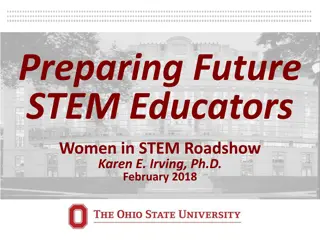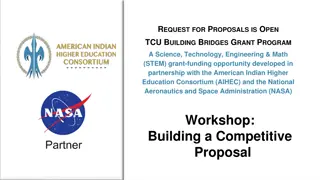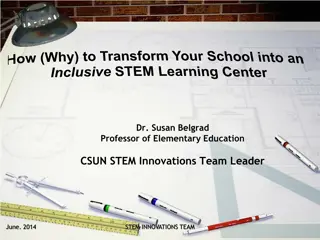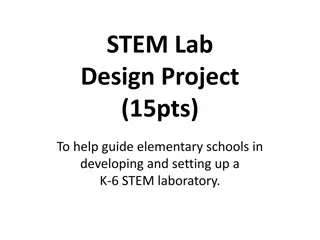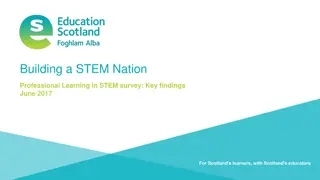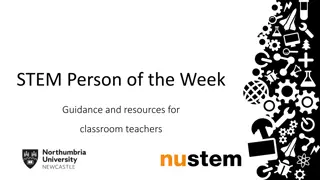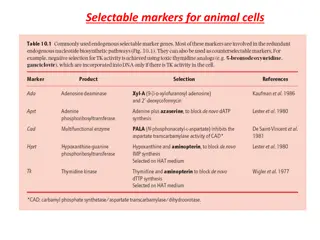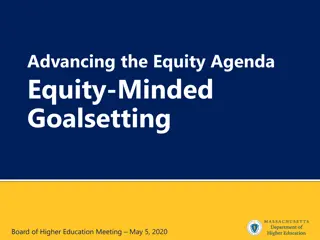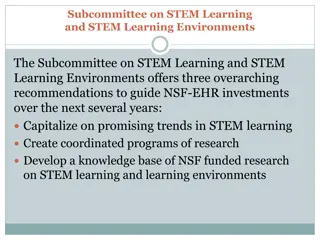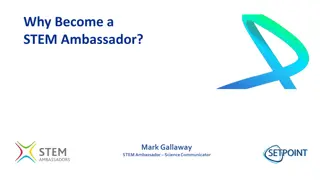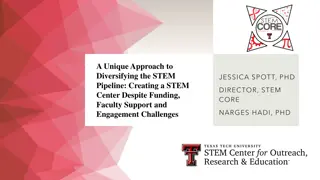Advancing Equity and Excellence in STEM Education at Western Washington University
This research project explores the effects of the Advancing Equity and Excellence in Science (AEES) initiative on undergraduate first-year and transfer students in STEM fields at Western Washington University. The initiative aims to enhance student success, increase diversity in STEM, and create a supportive learning environment through professional development, policy revisions, and faculty mentoring. Key research questions focus on the program's impact on students' science identity, motivations, sense of belonging, and academic outcomes, with consideration of student characteristics and cohorts.
Download Presentation

Please find below an Image/Link to download the presentation.
The content on the website is provided AS IS for your information and personal use only. It may not be sold, licensed, or shared on other websites without obtaining consent from the author.If you encounter any issues during the download, it is possible that the publisher has removed the file from their server.
You are allowed to download the files provided on this website for personal or commercial use, subject to the condition that they are used lawfully. All files are the property of their respective owners.
The content on the website is provided AS IS for your information and personal use only. It may not be sold, licensed, or shared on other websites without obtaining consent from the author.
E N D
Presentation Transcript
Examining the effects of an inclusive, student-centered initiative on undergraduate first-year and transfer students' identity, motivations, and belongingness in STEM Emily Borda Western Washington University, Bellingham, WA
Advancing Equity and Excellence in Science (AEES) initiative at Western Washington University (WWU) Project Goals Improved student success in STEM courses More diverse students with STEM degrees and/or career intentions Sustainable climate for continuous improvement Adaptable model for institutional transformation Project Activities Professional development for faculty in inclusive, student-centered teaching and learning Professional development for teaching assistants in inclusive, student-centered teaching and learning Policy review and revision Restructured coursework for entering students (Two-quarter seminar sequence, Math for the Natural Sciences, special section of English 101) Faculty mentoring of students in seminars
AEES Seminars Learning about learning (How People Learn; research vignettes) Learning about science (CREATE) Mentoring (Faculty mentoring; scientist interviews; professional communication) Equity, Diversity, and Inclusion (Scientist Spotlights; readings)
AEES Seminars Students invited to the AEES program: First Year OR Transfer AND: Science interest AND: Underrepresented minority First generation Women Comparison Group Did not accept invitation OR Accepted invitation FY Section 1 (Biol, premed) (Max 24) FY Section 2 (Chem, Phys) (Max 24) FY Section 3 (Geol, Marine Sci) (Max 24) Transfer Section (Mixed) (Max 24) Added Y2 (2018)
Research Methodology and Questions Untreated control group design with dependent pretest and posttest samples 1. What is the impact of the AEES program on students perceptions of their science identity, motivations, sense of belongingness, and ultimate success (e.g., GPA, graduation)? a. How do AEES program impacts differ by student characteristics and cohorts? 2. To what extent are science identity, motivation, and sense of belongingness predictive of academic outcomes?
AEES Non-AEES Total Participants N 208 115 323 % Female 74.5 76.8 74.6 STEM-interested students experiencing their first year at WWU (2017-2019). % White 49.0 60.9 53.1 % Transfer 27.9 22.6 25.9
Results for RQ1: Impact of AEES vs. non-AEES Science identity No differences between AEES and non-AEES groups. Belongingness to STEM AEES students perceived greater classroom comfort. First year students perceived greater peer support overall. Science Motivation No differences between AEES and non-AEES groups. AEES transfer students had higher science goal orientation than non-AEES transfers, but the opposite for first year students. Belongingness at WWU AEES students reported greater belongingness at WWU. *Ceiling effects in pre- surveys for science identity and motivation
AEES Students I like making connections with faculty members, it makes me feel less intimidated of the STEM field because now I know many professors here. I had a really hard time meeting people and making friends when I first got to campus, so the AEES program really allowed me to have sort of this instant community. I benefited from the in depth analysis of graphs and scientific articles. I know that will help me in my future, in fact, it already has for this year. . .I loved that the class felt like a safe space for students to share their thoughts, and always empowered us to succeed in science.
Results for RQ2: Predicting Success Science identity and various aspects of motivation were not predictive of ultimate academic outcomes persistence in STEM majors, graduation, or GPA. Less intrinsically motivated students tended to change majors after their initial year at WWU, but these were most often to another STEM major. The lack of significant findings may have been as a result of ceiling effects on the measures. Students sense of belongingness to WWU at the end of their first year positively predicted both STEM and overall GPA.
Implications Belongingness is a central factor in college success Programs with cohort designs may lead to greater belongingness. Explicit attention within courses to equity and inclusion may contribute to belongingness. Responsiveness to cohort specific characteristics is needed in seminar instruction. Students come in with strong science identity and science motivations. There is an opportunity for seminar instruction to leverage these traits.
Questions? Emily Borda: bordae@wwu.edu Dustin Van Orman: vanormd2@wwu.edu Dan Hanley: hanleyd@wwu.edu
Next Steps Examining the effects of mentoring on students and peer mentors. How do peer mentors impact AEES students science identity, motivation, and sense of belongingness to STEM and WWU? What is the impact of the peer mentoring experience on the peer mentors? Longitudinal, mixed-methods study of AEES impacts with cohorts 1-6. What is the impact of AEES participation on students measured outcomes long term? Are there changes in students science identity, motivation, and sense of belongingness in STEM and WWU long term? How did instructors adapt their curricular decisions, instructional and mentoring practices over iterative terms of the AEES seminar course? What key barriers, supports, critical junctures and decisions did AEES students encounter during their path toward their program/degrees? At the departmental level, in what ways are inclusive and student-centered teaching supported or constrained?
Interactions: Science Identity Transfer students had higher science identification than first-year students. Cohort two transfer students identified less with science than first- year students.
Interactions: Science Motivations In non-AEES cohort one and two, freshman students averaged higher self-determination and intrinsic motivation than transfer students, but the opposite is true in corresponding AEES cohorts. Non-AEES cohort three transfer students averaged greater self- determination and intrinsic motivation than freshman, but their AEES counterparts had an inverse relationship.
Interactions: Belonging Freshman students perceived greater peer support, classroom comfort, and less insolation than transfer students, with the exception of AEES cohort three students where the opposite was true. Cohort three AEES students reported greater belongingness to WWU than did the other cohorts.
